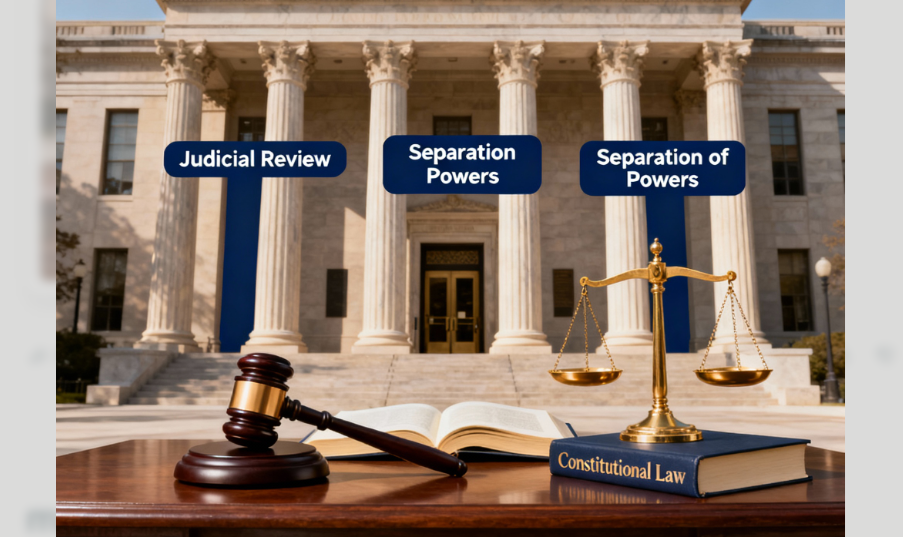Published On: 15th September, 2024
Authored By: Sourav Sagar
Symbiosis Law School, Pune
IN THE SUPREME COURT OF INDIA
(Bench: B.N. AGARWAL, JUSTICE, A.K. MATHUR, JUSTICE AND DALVEER BHANDARI, JUSTICE)
Civil Appeal No. 812 of 2004
Naveen Kohli (Appellant) Vs. Neelu Kohli (Respondents)
Decided on March 21, 2006
Facts:
Naveen Kohli is Appellant in the present case, who married Neelu Kohli (Respondent) on 20th November in 1975. They are parents to three sons however, their marriage was not on right track as it was getting strained with passing time. The respondent filed end no. of cases against the appellant in lieu to make his life miserable under the Indian Penal Code, 1860 as well as various civil cases were filed too. Moreover, the respondent got issued a public notice in the newspaper in order to lower down the prestige of her husband. In return appellant also filed some cases against the respondent. Both the parties were staying apart for more than 10 years. Furthermore, the Appellant approached the family court in Kanpur city to file a suit for divorce.
The case was filed on the charge of adultery whereas for dissolution of marriage, it was alleged on the ground of cruelty. The respondent explicitly denied all the allegations in front of the family court including that of adultery. Moreover, the respondent accused the appellant of leading an adulterous and immoral life. The family court here, noted that the various cases of civil as well as criminal, filed by respondent resulted in torture and harassment of appellant by police and therefore, resulted in cruelty which clearly satisfied one of the grounds for divorce. i.e., Sec. 13 (1) (i-a) of Hindu Marriage Act, 1955. The court granted divorce as it observed the marriage to be broken down to the level of being irreparable and the allegations based on adultery was proved baseless from both the sides. More importantly, all the way to reach amicable settlement was exhausted and the deep- seated dislike between them made impossible for them to stay together in a marriage. Furthermore, the court ordered the appellant to deposit Rs. 5 lakhs in the account of respondent as a permanent maintenance.
Aggrieved by the judgement of Family court, the respondent appealed to the Allahabad High court. The case was further pleaded in the court and the allegation of adultery against the appellant was found to be true therefore, it was upheld and the decree of divorce issued by family court was quashed on the ground that the appellant approached the court with unclean hands.
Therefore, disheartened by the reversal of the judgement, the appellant, by the way of special leave petition appealed to the Supreme Court.
Issues:
The case was headed by a three-judge bench of the Supreme court. The judgement was majorly based on two issues-
- The decision of the High Court in the instant case, in light of the settled position of the law crystallised by precedents and Cruelty as a ground for divorce under the Hindu Marriage Act, 1955.
- The notion of “Irretrievable breakdown of marriage” as a ground for divorce in view of the facts of the present case.
Rules:
- Section 13(1) (i-a) of Hindu Marriage Act, 1955 – This section deals with cruelty which allows any spouse whether husband or wife to file a petition for decree of divorce on the ground of cruelty which can be categorised as mental or physical or a situation that puts his/her life, limb or health in jeopardy.
Judgement and its Analysis:
The supreme court upheld the decision of family court in granting divorce on the ground of cruelty. However, the court examined the provision with various judicial decisions to
establish the scope of cruelty as it is pertinent to note that cruelty was only introduced under the ground of divorce after the 1976 amendment. The word cruelty has not been defined in the act. It differs from individual to individual as it depends upon various factors which is to be determined in each case keeping in mind the circumstances and facts of that case.[1] . The cruelty can be mental or physical, intentional or unintentional[2]. And any odd behaviour that causes mental suffering, anguish, disappointment, or dissatisfaction in one partner would be categorised as mental cruelty. The conduct of inflicting pain and suffering upon the other person makes living together for them impossible.
While elaborating on cruelty as a matrimonial offence, the Supreme Court noted that irretrievable breakdown of marriage was becoming more important factor for judges to consider when granting divorce on fault grounds[3].
In the present case, the court observed the fact that the parties were living separately for more than 10 years, heavily reflected the breakdown of their marriage. therefore, the court as cited in the case of Lachman Utamchand Kripalani v. Meena reiterated that in essence desertion means the intentional permanent forsaking and abandonment of one spouse by the other[4].
And the court here referring to the abovementioned trends stated that it is important to consider this fact while granting divorce.
IRRETRIEVABLE BREAKDOWN OF MARRIAGE AS A GROUND
The concept of irretrievable breakdown of marriage in front of the court was not something new as it has been observed time and again in many cases where the marriage is dead and divorce could not be granted on this ground as it still awaits to get recognition in the HMA, 1955. The court made efforts in supporting this ground by stating some authorities in order to bring change.
One of the main authorities mentioned was the 71st report of Law Commission where it declared unequivocally that limiting or restricting divorce grounds to specific offence or matrimonial incapacity caused injustice to those parties who were unable to live together in the capacity of spouses and moreover, could not impose any fault on each other. Therefore, it was recommended on these lines to incorporate breakdown theory in the country’s divorce laws.[5]
The court laid emphasis on adding the breakdown of marriage as one of the grounds of divorce as sometimes matrimonial offence becomes the outcome of deteriorated marriage and it tends to increase bitterness between the parties. The General Assembly of the Church of Scotland in 1969 also suggested that in order to protect the marriage institution from turning into disrepute, the court must protect the sanctity of the marriage therefore, it should do away with the fault theory with the same spirit.[6]
Furthermore, the (New Zealand) Divorce and Matrimonial Causes Amendment Act, 1920 was cited by the Supreme Court to support the fact that it was the first country among the commonwealth countries to introduce irretrievable breakdown of marriage as ground for divorce. In this regard, the Court also cited Salmond, J.’s decision, which held that if a marriage had ceased to exist de facto, it should likewise cease to exist de jure, and that this approach would be in the best interests of the parties involved as well as the public.[7]
Therefore, the court observed that it would be unrealistic to ignore the fact that the matrimonial bond is broken down beyond repair and trying to maintain such marriage with legal enforcements would not fulfil the purpose of marriage in the eyes of the parties as well as of the public.
However, it is contended that the supreme court didn’t further evaluated the practical implications of incorporating the irretrievable breakdown of marriage as a ground for divorce briefly. As two consequences arise out of the introduction of breakdown theory in divorce laws. The first one is that there will be increase in no. of litigation cases related to matrimonial disputes which can be problems based on minor disputes and hasty decisions therefore, the floodgates for litigation will get wide open. And secondly it can become discriminatory for women who are in disadvantages position in their marriage particularly in India where only the right of maintenance is recognised and not right to matrimonial property. In this case, the Supreme Court simply considered the first criticism and decided not to discuss the second issue. Instead, the Court accepted the view advanced by numerous jurists, as well as the Law Commission Report, that human life has a finite duration and that
any circumstance that causes suffering cannot be allowed to endure for a long period of time.
In the present case, the court noted that the marriage is irretrievable broken down as many instances supported the same such as living separately for more than 10 years and filing numerous cases against each other and refusal to give divorce on mutual consent only shows the callous attitude of the respondent towards the appellant. Therefore, the court stated that High court should have taken pragmatic view as the marriage was dead and the judgement of High court was set aside. Further, the court ordered appellant to deposit Rs. 25 lakhs in the account of Respondent as permanent maintenance and granted the divorce under the Hindu Marriage Act, 1955. At the end ,the court also suggested the legislatures to look into adding ‘irretrievable breakdown of marriage’ as a ground for divorce under HMA, 1955.
Legislative Approach:
In 2010, the Marriage Laws (Amendment) Bill was proposed in Parliament with the goal of ending long-running divorce cases by adding irretrievable breakdown of marriage as a new ground for divorce. The bill also aimed to protect divorced women’s rights by allowing them a share of their husband’s property. The bill has been mired in limbo between the two houses of Parliament for many years, and even women’s rights campaigners have virtually given up the fight for stronger, updated marriage rules.
The bill became disputed when it was taken in the hands of the Standing Committee headed by Jayanthi Natarajan in 2011 as the committee suggested to give the husband’s property as a safeguard against individuals who may misuse this provision to end their marriage. However, the bill was passed in Rajya Sabha on 26th August 2013[8].
It was introduced again in November 2014 however, the revised bill consisted of provision which alarmed men’s rights activists as the provisions were more women friendly. Therefore, it is suggested to draft the property- sharing bill by taking in consideration of both the sides.
Conclusion:
The judgement in Naveen Kohli though celebrated is not the only case which suggested the addition of breakdown theory in divorce laws. However, it prompted the legislatures to bring change through its reasonings given in the case. Moreover, the irretrievable breakdown of marriage is still not independently operatable as a provision under HMA, 1955 but it is taken into consideration while granting divorce.
With respect to the need for introducing irretrievable breakdown of marriage as a ground for divorce is a consequence of instituting mutual consent based on no- fault ground for divorce. This is because mutual consent divorce does not account for circumstances where the marriage is dead in reality owing to protracted separation but is still alive on paper due to one party’s refusal to terminate the marriage. In such cases, the court should provide adequate
solution for dissolving the marriage and here the role of irretrievable breakdown of marriage as a ground for divorce comes into play.
References:
[1] V. Bhagat v. D. Bhagat [(1994) 1 SCC 337]
[2] Shobha Rani v. Madhukar Reddi [(1988) 1 SCC 105 : 1988 SCC (Cri) 60]
[3] Durga P. Tripathy v. Arundhati Tripathy, A.I.R. 2005 S.C. 3297., Chandrakala Menon v. Vipin Menon, (1993) 2 S.C.C. 6
[4] Lachman Utamchand Kirpalani v. Meena [(1964) 4 SCR 331 : AIR 1964 SC 40]
[5] Law Commission Report ‘Irretrievable Breakdown of Marriage – Another Ground for Divorce’ https://lawcommissionofindia.nic.in/reports/report217.pdf, March, 2009.
[6] 7 Naveen Kohli, (2006) 4 S Para 68
[7] Naveen Kohli, (2006) 4 S,Para 71
[8] The Marriage Laws (Amendment) Bill, 2010 https://prsindia.org/billtrack/the-marriage-laws-amendment-bill-2010.




